V-3
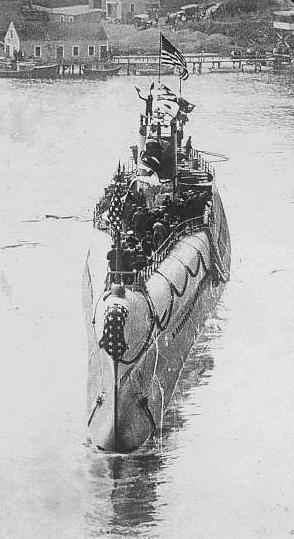
Photo in the private collection of Ric Hedman.
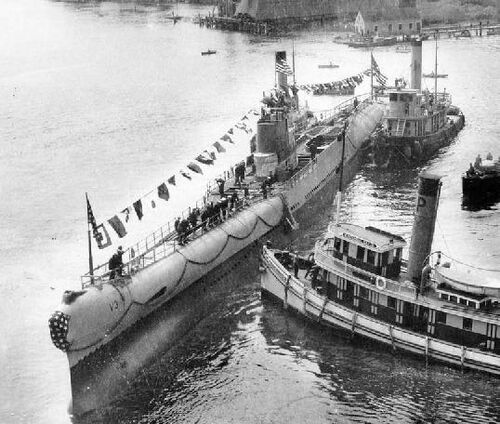
Photo courtesy of the Milne Special Collections, University of New Hampshire Library, Durham, N.H. Used with permission.
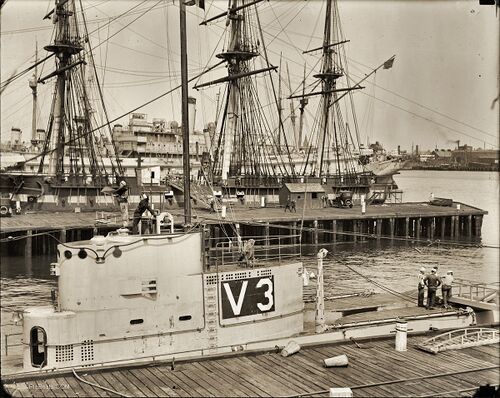
V-3's commanding officer at this time was LCDR Charles A. Lockwood, Jr., later to rise in rank to the rank of Vice Admiral with command of the Submarine Force, Pacific Fleet (COMSUBPAC). He was instrumental in developing the leadership and strategy in the highly successful submarine war against Japan.
Boston Public Library/National Archives Photo
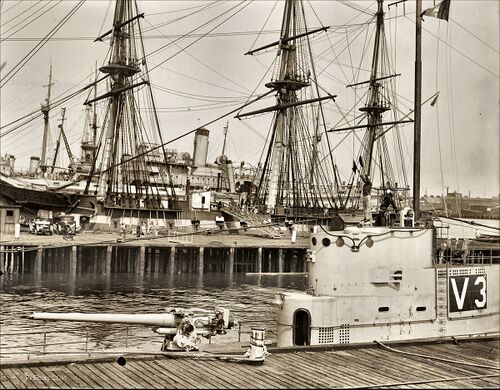
There are good details of the 5"/51 caliber Mk 9 gun visible here and in the photo below. This was a large and heavy weapon that fired "semi-fixed" ammunition, meaning that the complete round (projectile + propellent charge) is stored connected together in the magazine, but the two can be easily separated for quicker handling. This would have been a necessity without a powered ammunition hoist.
Boston Public Library/National Archives Photo
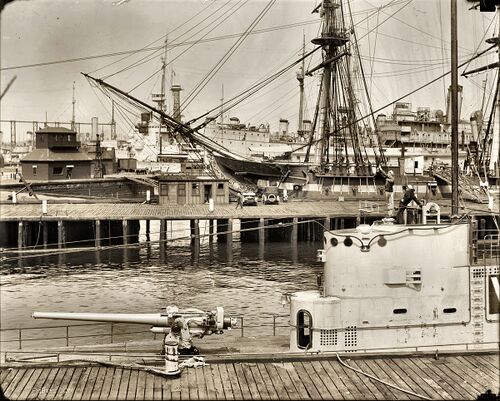
Boston Public Library/National Archives Photo
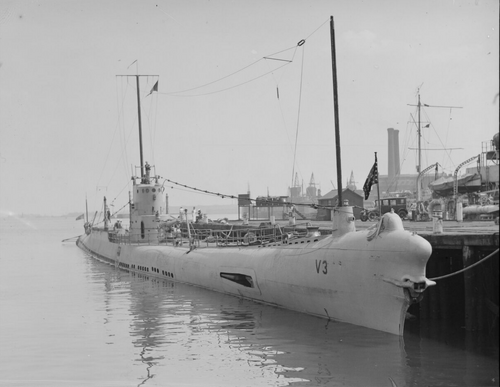
V-3 moored at what is likely the Boston Navy Yard, approximately 1927. This is a fine bow shot, and it illustrates the unusual bow shape for these boats. The standard Navy stockless anchor is housed in a recess in the tip of the bow, with the shank and the shackle ring protruding all the way up into a bulge atop the hull directly above it. The impression one got from this configuration was that of a shark with some prey caught in its mouth
Just behind the anchor shank housing bulge was a housing for the forward retractable radio mast. When not in use the mast would retract down into the pressure hull between the torpedo tubes. There was a similar unit all the way aft. The very tall masts fore and aft worked in conjunction with the extendable mast amidships on the conning tower fairwater, and were used to string the very long aerial wires needed for long range radio communications. The relatively low powered radio sets of the day required these long line antennas held high in order to send and receive signals at the ranges needed.
Photo courtesy of the Massachusetts Digital Commonwealth.

Directly behind the after deck of the submarine is the location where the North End of the Golden Gate Bridge will be constructed. This is known because of the presence of the Lime Point Light House seen at the right edge of the photo. The lighthouse is still there today although many of the buildings have been torn down around it.
The very small building seen set on the shore to the left of the light house is the approximate position of the northwest bridge pier footing.
Photo in the private collection of Ric Hedman.

Photo in the private collection of Ric Hedman.
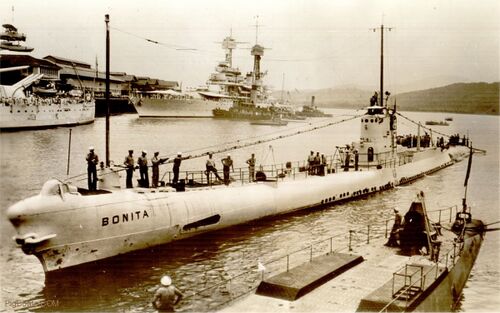
The vessels in Bonita's group heading to New York from the Pacific included Submarine Division 12 with the USS Bushnell (AS-2), a tender and the flagship of Rear Admiral John W. Greenslade, Commander Submarine Force, U.S. Pacific Fleet. USS Holland (AS-3), another tender, and the USS Ortolan (ASR-5), a rescue vessel, accompanied them along with the submarines Barracuda (SS-163), Bass (SS-164), Nautilus (SS-168), Dolphin (SS-169), and Narwhal (SS-167). The last being contingent on the completion of an overhaul at the Mare Island Navy Yard.
Various components of the combined fleet went their own ways for the various war game aspects of "Fleet Problem XV". The outcome of these war games is that for the first time, commanders were encouraged to "emphasize on decisive offensive action, reliance on individual initiative, and development of decentralized command and control".
Photo in the private collection of Ric Hedman.
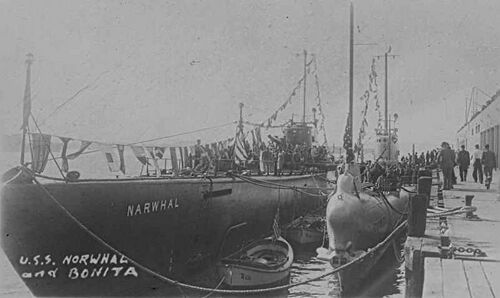
Photo in the private collection of Ric Hedman.
Page created by:
Ric Hedman & David Johnston
1999 - 2023 - PigBoats.COM©
Mountlake Terrace, WA, Norfolk, VA
webmaster at pigboats dot com
